Garment sewing produces waste, sometimes a lot of it. After years of sewing, my woven scrap pile was getting pretty large and I really wanted to turn some of it into a quilt. Then in 2019 Farm & Folk posted this on Instagram and I had a solution: I’d make 100 nine patch blocks using only scraps from previous projects.
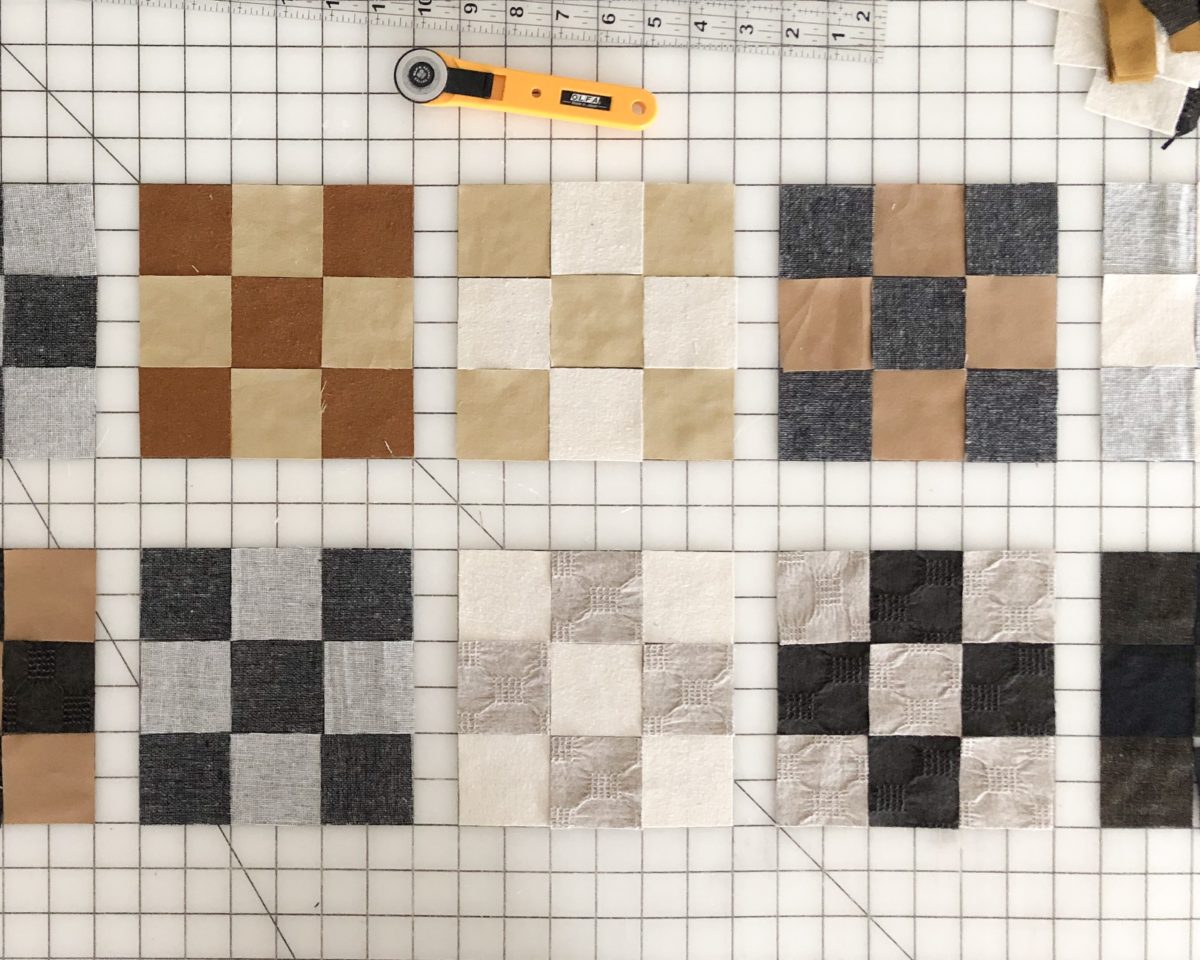
Almost immediately, I started cutting 2″ x 2″ squares and arranging them. It’s pretty amazing how different fabrics and textures can come together and look so cohesive.

I only made a handful at the start and then set this project aside for a while. Almost a year later, I made a quilt design board out of homasote and canvas and picked this project back up. Briefly I wanted to try out a 100 day project but I didn’t enjoy the pressure and I wanted this process to be fun.
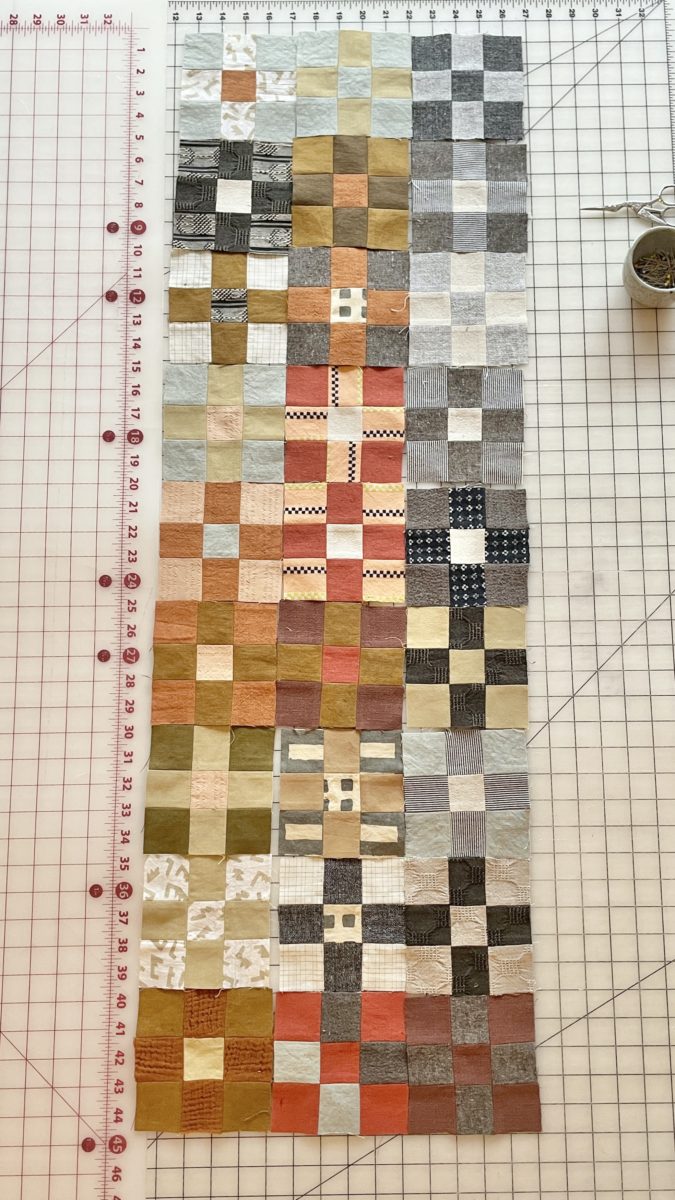
There was also a moment where I thought about making the quilt top entirely out of nine patch squares. After realizing this plan would require almost 200 blocks, I abandoned that idea.
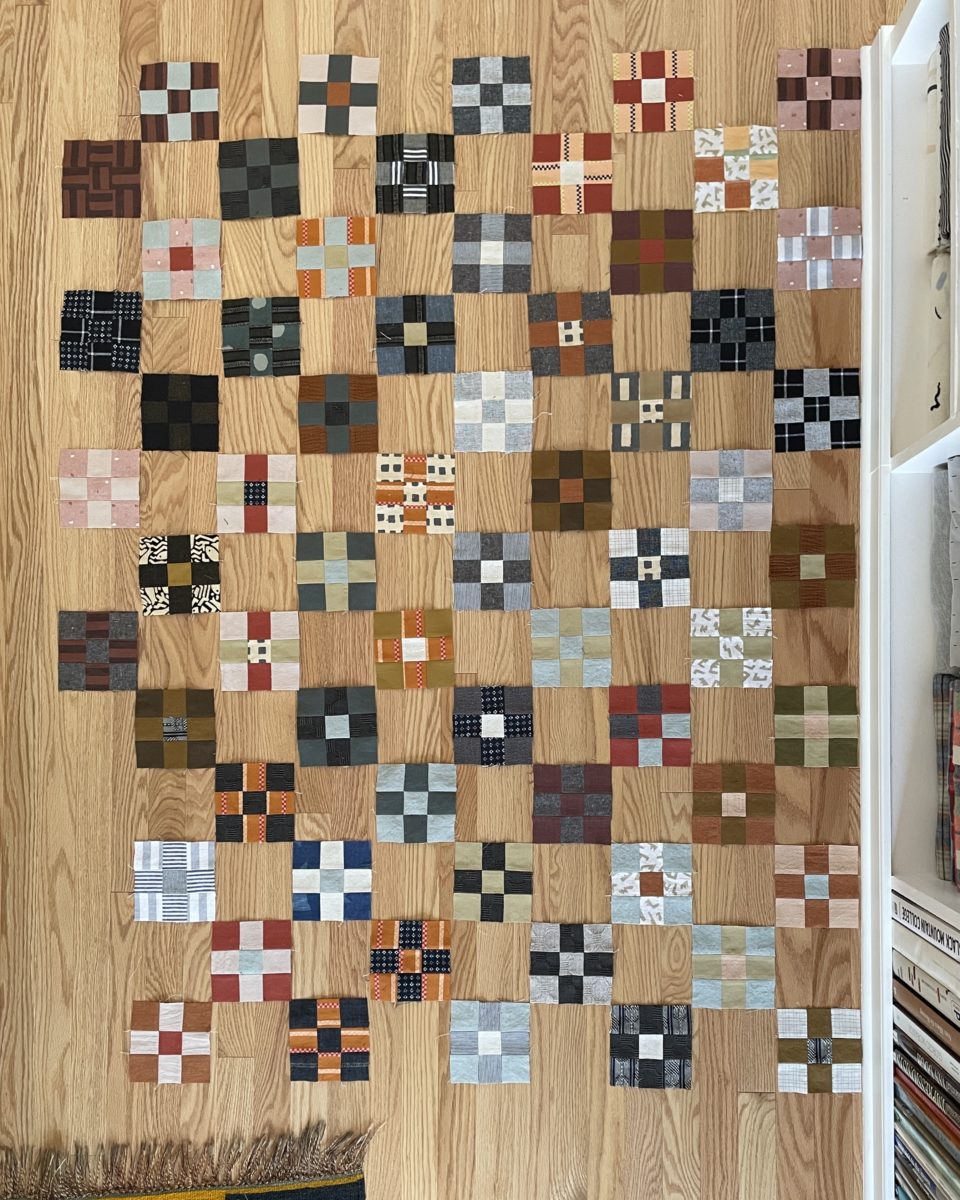
A few months later, I had over 50 blocks and this was the point where I actually calculated how many blocks I’d need for this layout and it was not 100, it was 98.
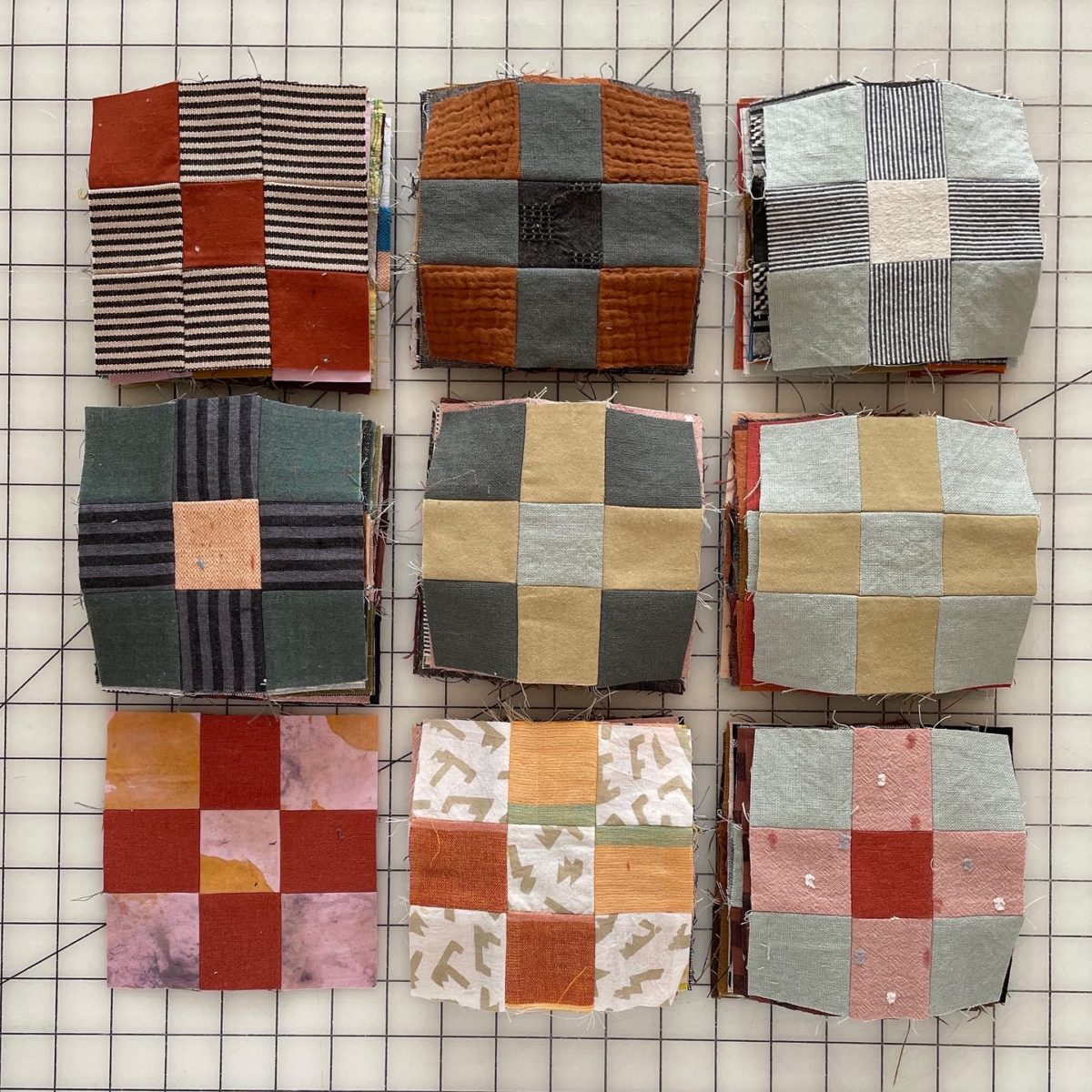
I decided to make 100 anyway and then I’d have some flexibility if I ended up not liking a couple squares.
Once I had 100 blocks, I removed the two I didn’t really like (seen on the board above), made seven piles of seven blocks, and laid them out on my table. My table wasn’t large enough so I tucked some foam core underneath the cutting mats. I ended up only moving about three blocks once everything was in place.
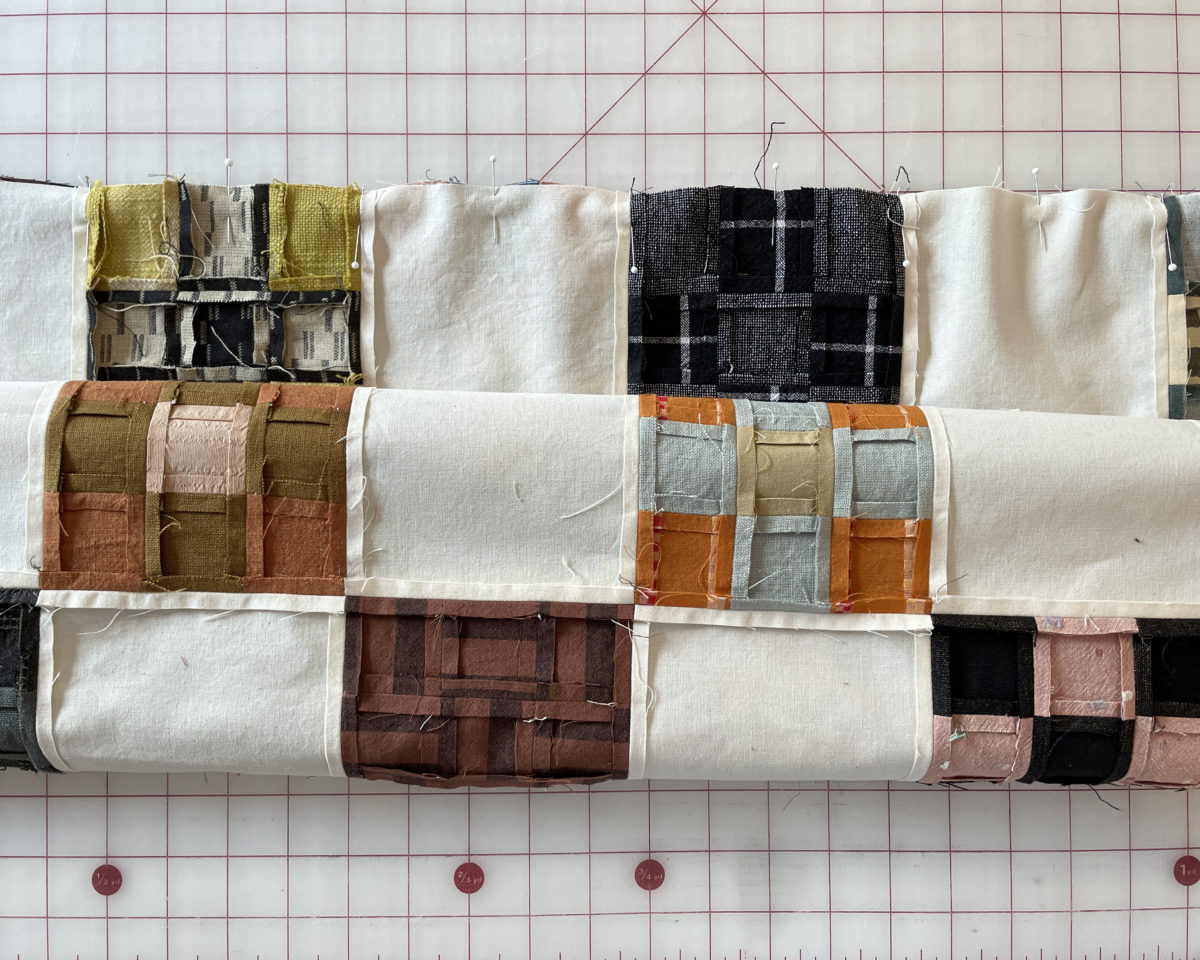
This project taught me that sometimes my 1/4″ seam allowances… vary and that using a bunch of different fabrics can really change the size of a block. The blocks that had double gauze were especially wonky. I ended up having to ease some of the blocks together so the corners were aligned. I could have trimmed everything down to match the smallest block but I threw caution to the wind and just forced the blocks to work together.
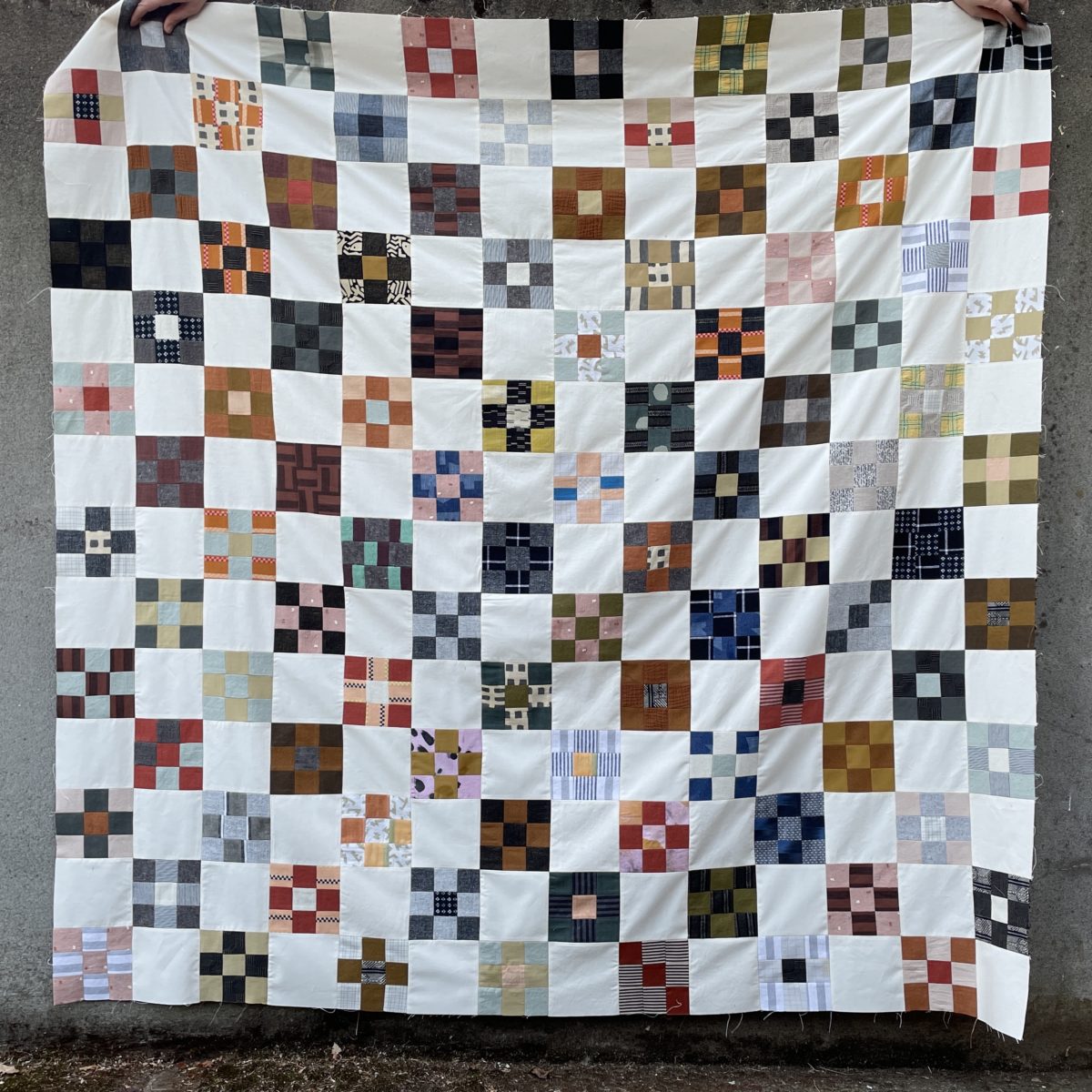
I used Kona cotton in natural for the solid squares. Before I had 100 blocks, I tried using scrap fabric in lighter colors but it made the nine patch blocks disappear. I think the bright solid color really makes the patchwork shine.
Next I’ll make the backing, baste the layers together, quilt, bind, and then wash.
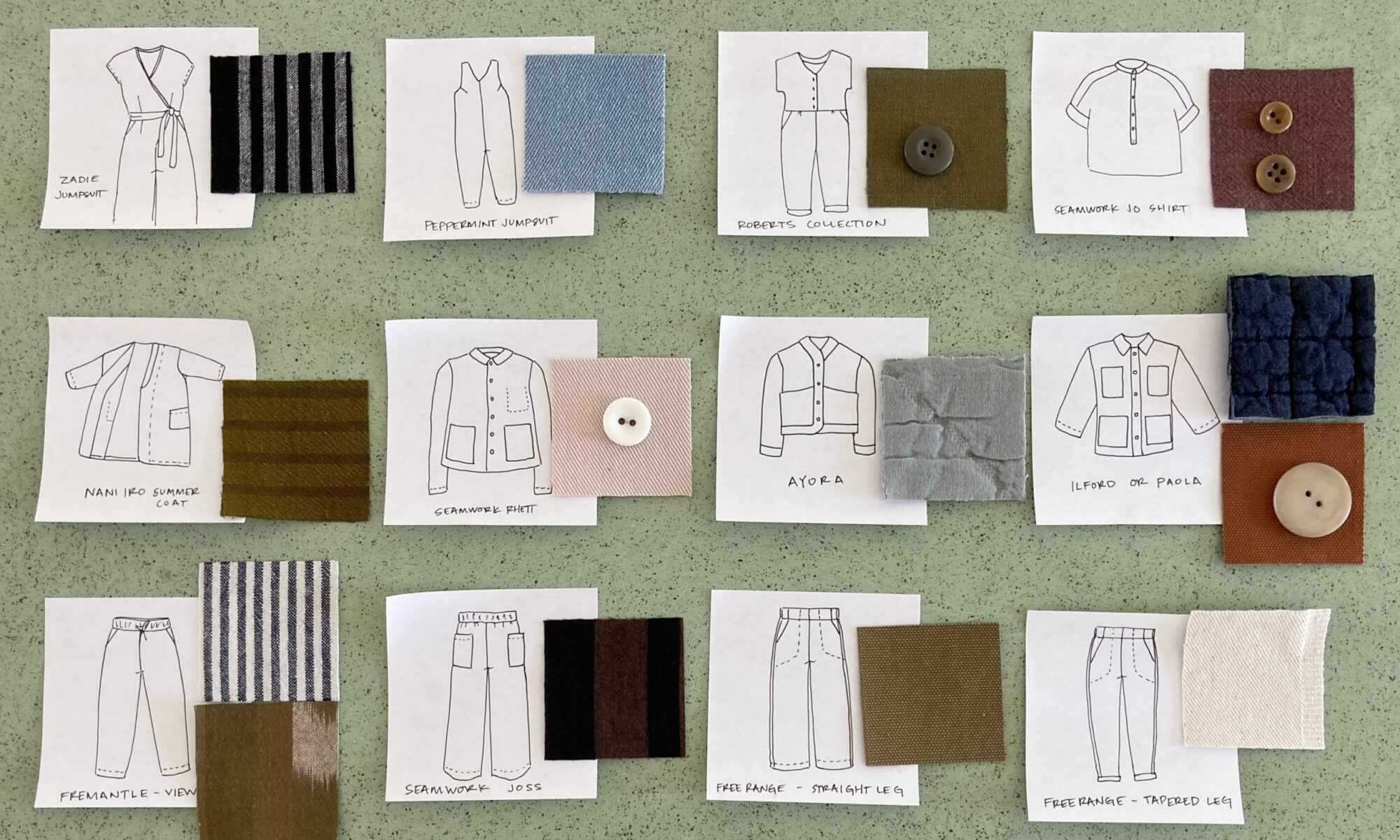
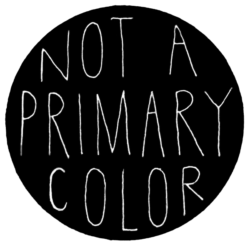
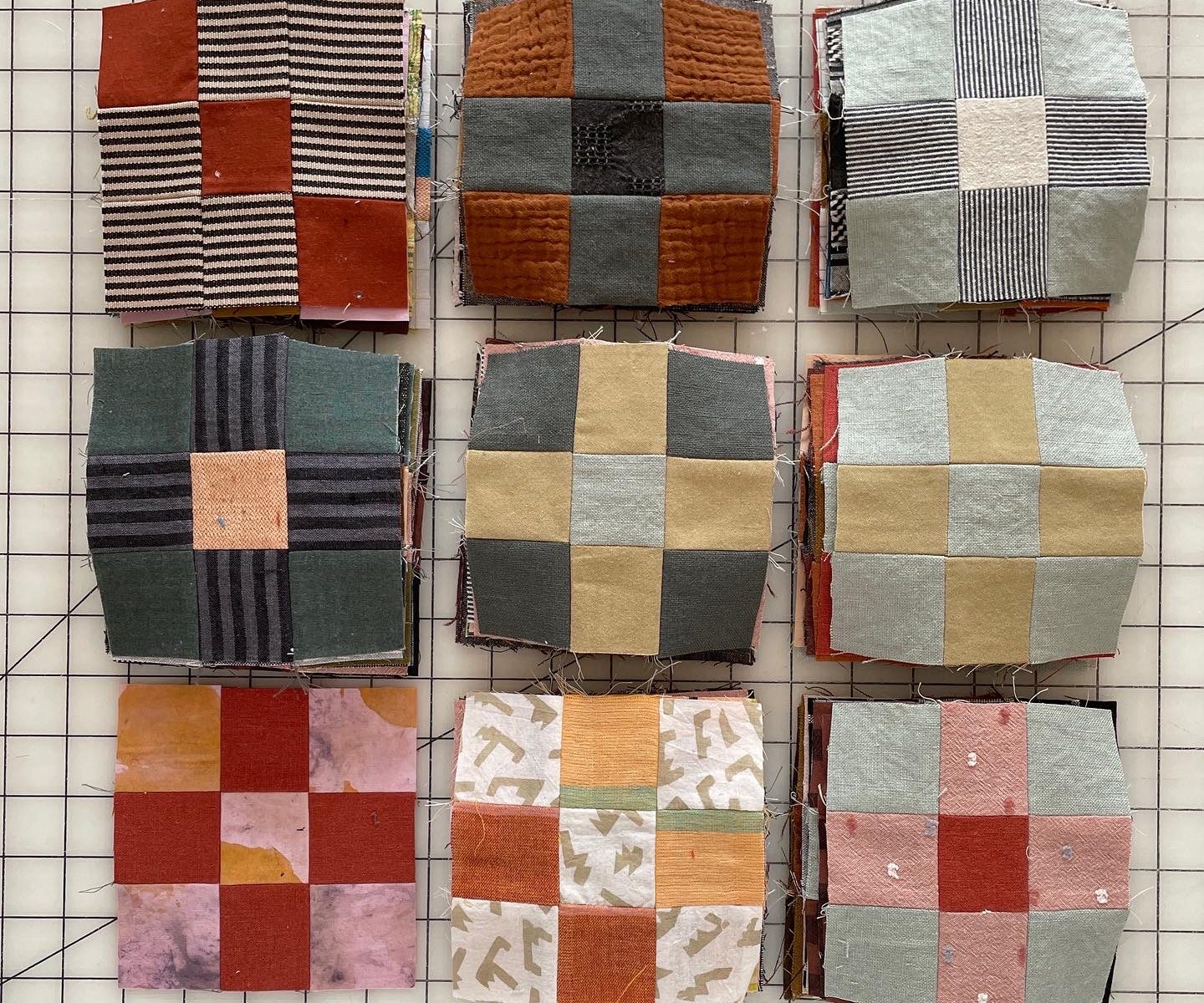
This encourages me to start quilting. I have so many scrap fabric pieces stored away. Thank you for sharing!
I love the backside of the finished quilt almost as much as the front. You have an impressive sense of style and I enjoy reading about your approach, process and attitude during each step of a project. Taking the time to capture images and writing down what you’ve done makes it for those of us who don’t sew but do appreciate those who are truly creative at the craft. Thank you for sharing. Love the time-lapse.
Sewing and pressing quilt seams is definitely different from sewing garments. Micro-accuracy in quilting is essential or you can easily end up with mismatched blocks. My favourite YouTube quilt channel is https://www.youtube.com/c/JustGetitDoneQuilts. Karen has great tips for sewing and pressing 1/4 inch seams, among other things. I’ve found that a lot of her ideas carry over into my garment sewing too. She’s ingenious and practical!
How is sewing and pressing pieced fabric different from sewing and pressing garments? What about my post said I needed advice? I’m very pleased with how my quilt top turned out and was sharing my process, which included using fabrics that don’t behave like stable quilting cotton. I appreciate that you’re sharing resources and trying to connect, but it wasn’t received that way.
It looks incredible! You’re right that the final product looks very cohesive despite the many different fabrics used. I can’t wait to see the finished product. You’ve inspired me to give this a try!
Thanks! It was a fun long-term project. Have you given it a try yet?